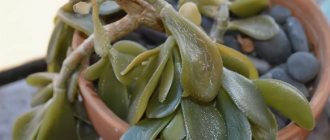The tricolor morning glory is the most beautiful representative of the morning glory genus. Ipomoea in the bindweed family Convolvulaceae.
Cultivated morning glory vines strewn with bright velvety flowers have been decorating squares, parks and courtyards in many parts of the world for many centuries. This article will reveal the secrets of growing indoor tricolor morning glory. Since this particular species has taken root well not only on the street, but has also received the status of a houseplant, with which you can enliven any interior.
Description of morning glory sweet potato
The culture belongs to the Bindweed family. Local residents value them for their taste and nutritional value. The herbaceous plant is characterized by short stature, its height does not exceed 30 cm. The bush spreads 1.5-2 m in width.
Flowers are light lilac, white and pink. Because of their funnel-shaped shape, they resemble gramophones. Their diameter does not exceed 5 cm. The inflorescences are formed from several single buds. It should be noted that when cultivating domestic varieties of morning glory sweet potatoes, special attention is paid to such a feature as the decorativeness of the leaves.
Distinctive features also include:
- spindle-shaped tuberous root system;
- liana-like shoot;
- heart-shaped leaves decorated with a pointed end. Their length ranges from 3 to 14 cm;
- elongated seeds (up to 6 mm). They are located in an angular woody box. Each seed is in a separate chamber;
- purple, yellow or pink fruits.
Edible tubers are formed on the lateral roots. The flowering period begins in mid-July.
The height of morning glory sweet potato does not exceed 30 cm. Recently bred varieties do not form inflorescences. In decorative varieties, the length of leaf blades often reaches 15 cm. Their color can be either variegated or monochromatic. Ripe tubers are characterized by their small size. Under favorable conditions it grows quickly. It is often used as a ground cover.
Where to keep it in winter
With the onset of cold weather, especially valuable varieties of morning glory are shortened to 50 - 80 cm and, together with the support, are transplanted into pots. For the winter, they are brought indoors and until spring they are cared for like a houseplant.
In March, green cuttings with 2–4 buds are removed from the shoots. The lower edge is dusted with rooting agent and placed in damp sand or seedling substrate.
Each cutting is placed in a separate pot and covered with a disposable transparent cup. In April, an unheated loggia is used for hardening off seedlings. Plants are planted in a permanent place on an open balcony in May.
Varieties of morning glory sweet potato
There are quite a few varieties of this culture. They are classified based on where they grow.
The Margarita variety can be planted in open ground. In this case, the deciduous plant reaches 30 cm, the length of the loop is 2 m. There are no flowers; gardeners value this variety for its decorative leaves. If the climate is unstable, morning glory sweet potatoes are grown as an annual. To achieve rapid growth, the hanging plant must be pinched during the growing season.
The purple variety differs from other varieties in its resistance to diseases and the pubescence of the stem. The length of the latter reaches 8 m. The dark green leaves have a smooth surface. Double inflorescences appear in early summer. They can be snow-white, soft pink, purple and red.
The list can be supplemented with the annual variety Mina Lobata. The densely growing crop produces flexible shoots. The stem is decorated with dark green leaf blades, which are distinguished by three-lobed stems.
Unusual inflorescences appear in the axils. At first, the spike-shaped brushes are bright red, then acquire a shade ranging from orange to snow-white cream.
The list of ornamental varieties of morning glory sweet potatoes is quite extensive.
| Variety | Sheet | ||
| Series | Subseries | Color | |
| Sweet | Caroline | Bronze | Bronze, externally reminiscent of maple. |
| Purple | Violet-purple, five-lobed. | ||
| Light Green | Light green, maple-shaped. | ||
| Red | Five-lobed, reddish. | ||
| Raven | Strongly cut, purple. | ||
| Bewitched | Unusual, bronze. | ||
| Green Yellow | Variegated, narrow. Decorated with light spots, golden and white touches. | ||
| Sweetheart | Red | Coloring depends on age. Mature plants are decorated with purple-green foliage, young plants are soft green. | |
| Purple | Undivided, grey-green. | ||
| Light Green | Lobed and whole, golden-green. Young ones are decorated with a bright purple border. | ||
| Heart | Light | Heart-shaped, light green in color. | |
| Purple | Purple, heart-shaped. | ||
| Illusion | Midnight Lace | Lobed, strongly cut, black-green. | |
| Garnet Lace | Light bronze, split, decorated with purple veins. | ||
| Emerald Lace | Delicate green, lanceolate. | ||
| Lady Fingers | Green, dissected, riddled with purple veins. | ||
| Pink Frost (Tricolor) | Solid, decorated with light strokes and pink edging. | ||
| Ace of Spades | Black, small size. | ||
All hybrids are divided into three categories:
- dessert;
- feed;
- vegetable.
The first group includes the following varieties: Chestnut, Amish Red and Korean purple. The following varieties have good taste: Amish Red, Beuregarde, Japanese, California Gold. Forage varieties include Brazilian and White Bouquet. Desserts are distinguished by their savory features.
They taste like carrots, melon, banana and pumpkin. They are often used to make wine and jam. Ipomoea Sweet Potatoes replace potatoes.
You can grow quite a few varieties at home. Kumara Red loves warmth and light. To ensure the latter, additional sources are used. This variety produces yellow oval tubers. The stems are decorated with large size and splendor.
Burgundy is one of the earliest varieties. The tubers are red, the leaf blades are quite large. Bright inflorescences exude a pleasant aroma.
Rules for planting morning glory sweet potatoes
Ipomoea Sweet Potato is a crop that does not have any special requirements for its growing location. Plants are moved into open ground towards the end of the last spring month. The boxes should be placed on window sills that are located on the south or southeast side. A lot depends on the lighting at this stage. You should also pay attention to protection from drafts. Its absence will negatively affect the seedlings.
Soil requirements
It should have neutral acidity and allow air and moisture to pass through well. Experienced gardeners prefer loamy and sandy loam soils. If the acidity is high, it is stabilized with lime. Before planting, make a substrate containing humus, sand and turf soil. Garden soil is useless in this case. It has too few nutrients. When using such soil, the likelihood of infection by parasites and diseases increases.
Preparing seeds and growing seedlings
Pre-sowing preparation is quite simple. The seeds are soaked in a solution of potassium permanganate. Then they are placed in the ground to a depth of 1.5-2 cm.
To save time, seed can be placed directly into large pots and hanging flowerpots. To create favorable conditions, the container in which the morning glory sweet potato is planted should be covered with a transparent film. Ventilation must be carried out daily. This will avoid condensation. It is removed after two weeks.
The air temperature in the room should vary from +18 to +25 °C.
Diseases and pests
Aphid
If you notice vague, yellowish spots on the leaves of the plant, it means that aphids have settled on it. These insects pierce the foliage and suck the sap from the plant. You can also determine that the vine has been attacked by aphids by the sticky dew that the insects secrete during their “work.” In this dew, over time, a very dangerous fungus can develop, which will destroy the morning glory if you do not rid it of aphids.
Using insecticides to control aphids will help you get rid of this pest. At the first sign of aphids, treat the vine with special preparations two or three times.
Spider mite
If a spider mite attacks a vine, you will be able to see characteristic dots and thin webs on the leaves. You can save a plant from spider mites simply by washing off the pest with strong water pressure. You need to bathe the vines in cold water for several days in a row to get rid of spider mites.
Diseases
Among the diseases, morning glory is often affected by fungal diseases - white rust, anthracnose, rot. Also, morning glory can become infected with over 20 types of viral infections. Physiological conditions such as white edema are very common. To treat some fungal diseases, it is enough to treat the plant with a fungicide and remove the affected parts. But soft, root and stem rot are incurable diseases. When they appear, the plant should be immediately destroyed - dug up by the roots, taken out of the area and burned to stop the spread of infection.
The main source of fungal diseases is contaminated soil. Waterlogging of the soil is especially dangerous for morning glory.
Viral diseases are also incurable, and the only thing gardeners can do is to destroy diseased plants. White swelling most often affects plants grown in greenhouses or indoors. The reason for the appearance of this disease is improper care of the flower: excessive watering, high air humidity, low air temperature. When this disease appears, greenish or yellow blisters appear on morning glory leaves, gradually turning brown and thickening. Leaves affected by the disease wither and fall off.
Planting morning glory sweet potatoes in open ground
The timing depends on climatic conditions. Usually landing occurs at the end of May.
The soil is prepared in the autumn. The selected area should be dug up and fertilized with humus. When choosing mixtures for fertilizing, you need to be guided by the initial state of the soil. To improve it, superphosphate and potassium fertilizers are used. In the spring, all that remains is to loosen the soil and feed it with ammonium nitrate.
Before starting the procedure, water the ground with a light pink solution of potassium permanganate. The seedlings are placed in holes, the depth of which is about 15 cm. 30-35 cm are left between the sprouts. After planting, the soil is compacted and watered with warm water. The seedlings are covered with transparent containers. They are removed after new leaves appear.
Features of cultivation
soil mixture
To grow morning glory, you need to prepare light, loose soil. Acidic soil stops flower development. The optimal pH level is between 6.1 and 6.5.
Heavy substrate must be loosened. It is necessary to add clean river sand into each planting hole in the open air. The soil should be thoroughly dug to ensure even mixing.
For sowing, the area should be prepared in advance. Poor soil must be fed at the rate of two buckets of organic matter per square meter of area.
The grooves can also be filled with a mixture of turf, leaf soil, perlite and bone meal. It is important to ensure good drainage.
Top dressing
In the spring, at the initial stage of the growing season, it is necessary to apply nitrogen fertilizers. At the time of bud formation, potassium and phosphorus should be used.
The dosage must be strictly observed. Excessive concentrations of phosphorus or nitrogen promote the growth of green leaves and shoots. Sparse inflorescences appear on the plant. The crop may stop producing budflowers.
It is important to follow the recommended concentration of fertilizers for feeding morning glory.
Morning glory in a container
It is often quite difficult to find a suitable place on the site for morning glory. A voluminous plant needs support to grow. Experienced gardeners recommend planting flowers in spacious pots. It is important to prepare a fertile substrate for the plant.
Small morning glories must be carefully protected from exposure to sunlight. A crop with signs of wilting should be removed away from sunlight. It will need a lot of watering over the next few weeks to allow it to recover. A container plant can decorate a balcony, loggia and garden.
Tuberous morning glory grows well in a container.
To plant in a pot, you need to prepare a suitable flowerpot. The ideal volume for morning glory is about three liters. At the bottom of the pot it is necessary to lay a layer of drainage no more than two and a half centimeters thick. It is advisable to use expanded clay, pebbles or ordinary crushed pebbles. You need to pour two handfuls of clean sand on top of the layer. From above you can fill the container with a standard soil mixture for flowering plants.
It should be remembered that the size of the plant directly depends on the volume of the container. The number of seedlings or seeds planted in the pot also affects.
Caring for morning glory sweet potato
Each crop requires regular agrotechnical procedures. The main requirement is compliance with the thermal regime. Morning glory is considered a heat-loving plant. It needs to be watered moderately but regularly. An excess of moisture is indicated by the appearance of white bubbles on the leaf blades. Immediately after moistening the soil, it is necessary to carry out mulching and loosening. Sick, weak or dried out shoots are pruned. Perennial plants are carefully inspected after wintering. Shoots that had to be removed during processing can be used as cuttings.
Feeding and fertilizer
To provide the plant with adequate nutrition, mineral and organic mixtures must be added to the soil. Wood ash is considered a universal fertilizer. For 10 liters of liquid, only 1 glass of the main ingredient is required. When using the complex, you should follow the attached instructions. Experts do not recommend using nitrogen-containing mixtures during the flowering period.
Wintering morning glory sweet potato
In autumn, the crop should be kept in a warm room. The air temperature should not be less than +25 ⁰С. Additional lighting becomes a necessity. Before wintering, autumn pruning is carried out. Leaving the plant in open conditions is strictly prohibited.
Decorative properties
The ability of morning glory bindweed to grow rapidly is simply amazing. In just 2 weeks, the plant is able to “drape” a facade wall or a decent-sized veranda. When growing in the garden, you can use morning glory to divide the area into zones, create a hedge, a flowering canopy or a stunningly beautiful porch of the house.
By planting morning glory on your apartment balcony you can create a living curtain. By planting plants in floor pots, you can move them around, constantly changing the appearance of the balcony. Curly morning glory can hide imperfections in the decoration of a balcony. Without the need for trimming and shaping, it is capable of wrapping any vertical shape. This plant is an excellent choice for lovers of ornamental plants.
Reproduction of morning glory sweet potato
Morning glory sweet potato can be obtained through:
- seeds This method is only suitable for experienced gardeners. The germination percentage is unlikely to be high, making it considered too difficult. It is most often used by breeders;
- tubers. Planting is carried out after the root crops acquire sprouts;
- cuttings. The shoot must have at least 2 internodes. After separation, the shoot is placed in water. After 5-7 days, roots will appear on it. At the next stage, you can begin planting morning glory.
Flowering culture
The plant has a little secret. The life cycle of each inflorescence is only one day. The culture constantly produces new buds. Flowering is remontant and continuous.
For abundant production of budflowers, it is necessary to provide diffused sunlight. Morning glory inflorescences are very sensitive to sunlight. Using supports made of pipes, wire and fishing line, you can give an unusual structure to a climbing vine.
A prolonged absence of inflorescences on morning glory indicates unfavorable conditions.
Lack of flowering indicates inadequate care. It is necessary to reduce the amount of fertilizing.
Mr. Summer Resident recommends: beneficial properties of morning glory sweet potato and its use
The plant contains many useful substances. Vitamins, proteins, carbohydrates, micro- and macroelements - the list is quite extensive. Starch obtained during processing is often used in medicine. It can help with disorders in the gastrointestinal tract and immune system. Forage varieties of morning glory sweet potato are popular in cooking and livestock farming.
Tubers and other edible parts should not be eaten by pregnant women or nursing mothers. The same applies to people who are sick with diseases of the digestive system. Ipomoea sweet potato can be planted next to petunia, ornamental grasses, Europhobia, purslane, and lobularia. This plant is used to decorate garden paths and gazebos. Caring for morning glory does not take much time.











